
The current flag of Sudan was officially hoisted on 20th of May in 1970. It shows three horizontal stripes in red, white and black and an isosceles green triangle on the mast. The colours of the flag seem to have been defined, also in the HEX colour space: green = HEX #007229, which would correspond to Pantone 356, red = HEX #D21034, which would correspond to Pantone 186. The colours of the blue-yellow-green predecessor also seem to have been defined, also in the HEX colour space, which is surprising for a flag of the 50s and 60s of the 20th century: Blue = HEX #0F47AF, which would correspond to Pantone 293, Yellow = HEX #FFF500, which would correspond to Pantone 803, Green = HEX #00923F, which would correspond to Pantone 355.
There are several explanations for the meaning or origin of the colours:
• Red symbolizes progress, revolution and the blood of patriots, white symbolizes love of peace and black the country itself ("Sudan" means "black"). The green of the triangle on the mast is the colour of Islam, but is also considered a symbol of prosperity.
• Red stands for socialism, white for purity and optimism and green for prosperity. Black again stands for the country itself ("Sudan" = "Black").
• The colors are those of the Umma Party, one of the oldest and most influential parties in the country, which now sees itself as the successor to the Mahdi movement However, it works illegally.
• The colour quadrad of green, white, black and red is a specifically Arabic color symbol, the Pan-Arabian colors. The (pan)Arab colors were officially introduced as the colours of the Arab movement during the First World War, when the Kingdom of Hejaz broke away from the Ottoman Empire, by Sherif Hussein of Mecca – from the Hashemid dynasty. The flag of the Hejaz served as a template. The colors have the following meaning: Red is the color of Omar, the second caliph. White represents the Umayyads, a caliph dynasty that dates back to the fifth caliph Moawija I. Green represents the Fatimids, an Ismaili-Shiite caliph dynasty that dates back to the fourth caliph Ali. Black represents the Abbasids, a caliph dynasty that dates back to Caliph Abbas I. Red is also the color of the Hashemids, an Arab ruling dynasty that probably goes back to Hashim ibn Abd al-Manaf, Muhammad's grandfather. Green is also the color of Islam in general, and therefore does not only refer to the Arab countries.
• The color scheme of the flag is derived from the flag of Egypt, as it largely resembles the Arab liberation flag introduced by Nasser in 1952.
The flag, which was adopted in 1956 when independence was achieved, was blue-yellow-green horizontally striped, but was abolished on the occasion of the the founding of the Democratic Republic on 25th of May in 1969. After a competition, the today's flag was adopted on 20th of May in 1970. The flags of the air force and of the navy are notable because they are the only flags in the country to follow the British ensign system to this day. A black-white-black flag of the armed forces is reported. The presidential flag has the same appearance as the national flag, but shows the coat of arms of the country in the middle of the white stripe, but in gold. The area of today's Sudan and South Sudan was gradually conquered by Egypt from 1820 onwards, with the viceroy still answering to the Sublime Porte of the Ottoman Empire, which remained the case until 1914. With the beginning of the First World War, this subordination relationship was abolished. Overlapping in time Egypt was occupied by British troops already in 1882, which culminated in a joint administration of Sudan in 1899 as Anglo-Egyptian Sudan. Until independence, two flags were always flown: the British flag and the respective Egyptian flag.
Source: Die Welt der Flaggen,
Wappen und Flaggen aller Nationen,
Flaggen Wappen Hymnen,
Flaggen-Atlas Erde,
Wikipedia (EN),
Volker Preuß

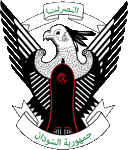
since 1970,
Coat of arms of Sudan,
Source, by: Corel Draw 4

The current national coat of arms was introduced in 1970. It shows a Secretary (African bird of prey), the national bird of Sudan. It bears a native shield on its breast. Above the bird is a banner with the motto of the state in Arabic: "Al Nasr nila" → "Victory is ours". On the lower banner is the name of the country, also in Arabic.
Source: Flaggen Wappen Hymnen


1956–1970,
Aircraft Roundel,
Source, by: Wikipedia (EN)

since 1970,
Aircraft Roundel,
Source, by: Wikipedia (EN)

Location:
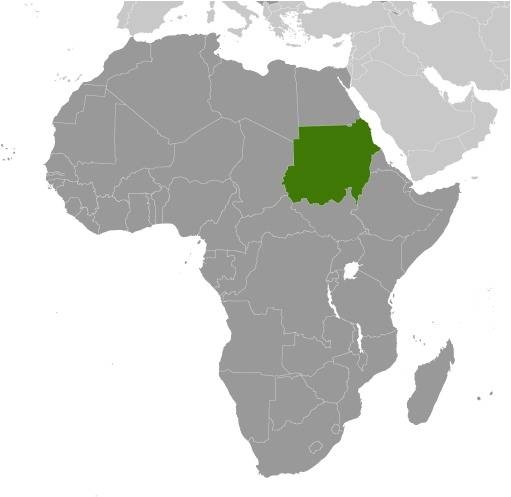
Source: CIA World Factbook
Map of the country:
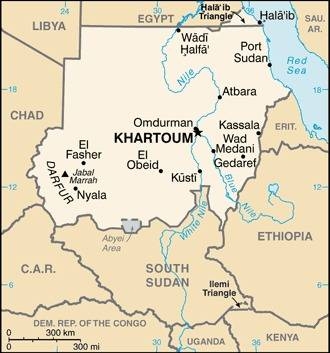
Source: CIA World Factbook
Interactive Map of Sudan:

Quelle/Source: Freeware, University of Texas Libraries,
modyfied by: Volker Preuß

Area: 718.720 square miles
Inhabitants: 49.200.000 (2023), thereof 70% Arabs, 30% Fur, Beja, Nuba, ...
Religions: mostly Muslims, some Christians
Density of Population: 68 inh./sq.mi.
Capital: Khartoum (Khartum, al-Chartum), 2.682.431 inh. (2012)
official Languages: Arabic, English
other Languages: Sudanese Arabic, Nilot Languages, etc.
Currency: 1 Sudanese Pound (£S, sud£, SDG) = 100 Piastre (Qirush)
Time Zone: GMT + 2 h
Source: Wikipedia (D),
CIA World Factbook

3500 B.C. · Nubian Empire of Qush in the north of the today’s Sudan
2600 B.C. – 1070 B.C. · the north of the today’s Sudan belongs to Egypt
300 B.C. – 300 A.D. · Nubian Empire of Meroë in the north of the today’s Sudan
350 A.D. · Meroë disintegrates into three kingdoms (Nobatia, Mukurra, Alwa)
600 · Nubia confesses to the Coptic Christianity, in the afteryears islamic attacks
1315 · Mukurra breaks down under the Arabian onslaught
1504 · Alwa breaks down under the Arabian onslaught
ca. 1500 – 1700 · Empire of the Fundsh in the southern Sudan, the north becomes dependent from the egypt Mameluks
ca. 1620 · islamization of Darfur
1805 · the Albanian officer Muhammad Ali Pasha seizes power in Egypt and installs his dynasty, initially as governor, and from 1867 as viceroy (Khedive) on behalf of the Sublime Porte of the Ottoman Empire
1820–1821 · Mohammed Ali of Egypt conquers the northern Sudan (Nubia and Khordofan)
1823 · foundation of Khartum by the Egyptians
1863–1875 · Ismail Pasha of Egypt conquers partially the southern Sudan and Darfur (1874)
1875–1881 · the Egyptians try to stop the slave trading
1881–1898 · anti-egyptian-clerical Mahdi revolt under the leadership of Mohammed Achmed, named Mahdi, formation of the Mahdi Empire
1882 · United Kingdom occupys Egypt
1885 · death of the Mahdi, successor is Chalifa Abdullahi
1888–1889 · the Mahdi Empire attacks Ethiopia and conquers the southern Sudan
1896 · Lord Kitchener, the British Supreme Commander of the egyptian army, gets the order to attack the Mahdi Empire
1898 · Battle of Omdurman, Lord Kitchener destroys the Mahdi Empire
1898 · Battle of Faschoda, Lord Kitchener strikes in southern Sudan invaded Frenchmen
1899 · Sudan is officially administered by Egypt and United Kingdom (Anglo-Egyptian Sudan)
1914 · in Egypt the Ottoman Viceroyalty is abolished, the suzerainty of the Ottoman Empire ends, proclamation of the British Protectorate of the Sultanate of Egypt
1924 · British attempts to administer separately the north and the south of Sudan
1948 · first elections to a legislative assembly
22nd of October 1952 · Egypt and United Kingdom grant interior self administration
1955 · the christian and animist South Sudan fears a northern and islamic dominance within an independent Sudan and starts the first of all for 17 years enduring civil war
1st of January 1956 · Egypt and United Kingdom grant the Sudan independence, Republic of Sudan
1958 · military coup d’état of General Ibrahim Abboud, dissolution of the parliament
1964 · General Abboud deploys a civil government
1969 · military coup d’état of Muhammad Gaafur al-Numeiri, dissolution of the parliament, prohibition of all parties, proclamation of the Democratic Republic of Sudan
1971 · attempted communist coup d’état fails
1972 · treaty of Addis-Abeba between the government of Sudan and the South Sudanese Liberation Front, temporary end of the civil war in the south, granting of autonomy for the South Sudan
1973 · new constitution
1975 · attempted coup d’état of the National Front with libyan support fails
1983 · South Sudan becomes divided into three separate regions, introduction of the islamic law, the civil war in the south breaks out again
1984 · proclaim of the state of emergency
1985 · military coup d’état of General Abdul Rahman Swaredahab, proclamation of the Republic of Sudan
1986 · proclamation of the Islamic Republic
1989 · military coup d’état
1992 · offensive against South Sudan
1994 · offensive of South against governmental troops
1994 · the Beja Congress in Eastern Sudan begins armed struggle
1996 · establishment of a civil government with consultatory character, isolation of South Sudan
1997 · successful offensive of the south sudanese SPLA (Sudanese People's Liberation Army)
1998 · new constitution
12th of December 1999 · proclaim of the state of emergency, dissolution of the parliament
2003 · outbreak of the Darfur Conflict, African rebels start the struggle against the Arabian government of the Sudan, governmental troops and militia exile 2,5 million residents, 400.000 perish
2004 · peace treaty between Darfur and Sudan fails
2005 · peace agreement with South Sudan, end the fighting, autonomy for South Sudan
2006 · ceasefire, peace agreement with Eastern Sudan
2008 · one more fights between Sudan and South Sudan
9th of January in 2011 · beginning of a multi-day referendum for independence in South Sudan
9th of July in 2011 · South Sudan declares its independence
2019 · military coup, state of emergency
2021 · military coup
2021 · reinstatement of a civilian government
2022 · repeal of the state of emergency
2023 · fightings between the Sudan Armed Forces (SAF) and the Rapid Support Forces (RSF)
Source: Atlas zur Geschichte,
World Statesmen,
Wikipedia (EN),
Volker Preuß

The name of Sudan is derived from the Arabian denomination "Bilad es-Sudan". That means "Land of the Black" and describes actually the whole region between Sahara and the African rain forest from western to eastern Africa. In antiquity and in the middle ages the land was called "Nubia", named by the Nubians, an African tribe which lives in the north of Sudan on Nile River.
Source: Handbuch der geographischen Namen


![]()

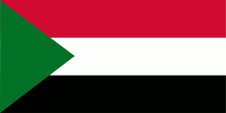




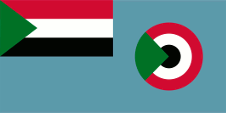
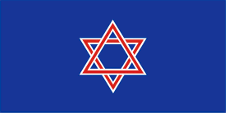
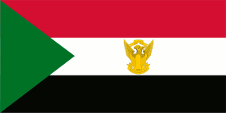
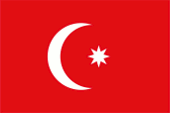
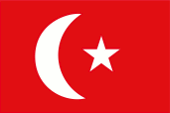
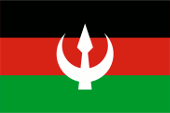

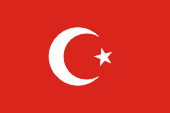

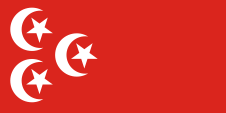

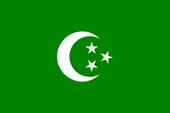
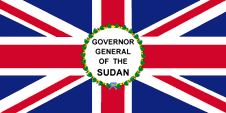
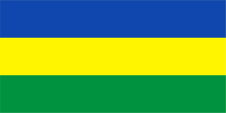







![]()
